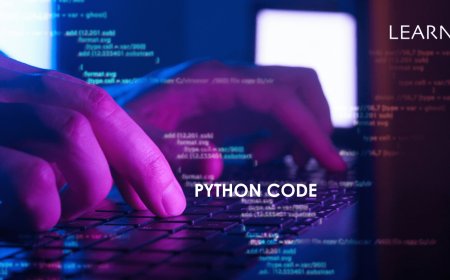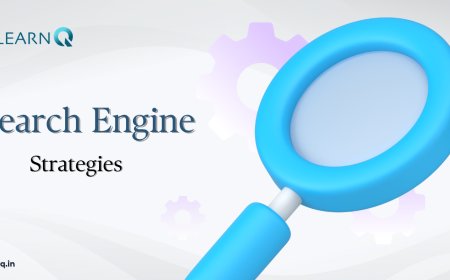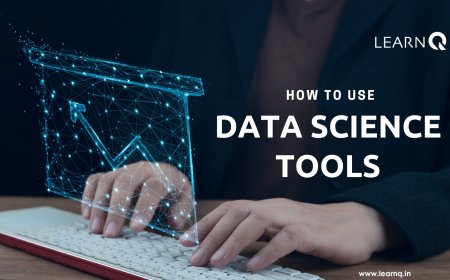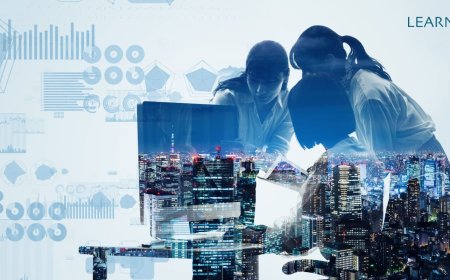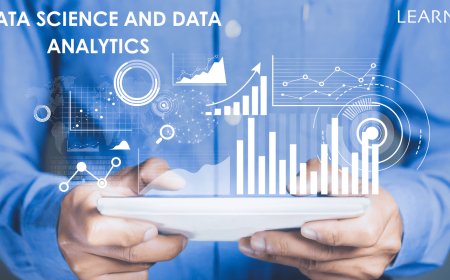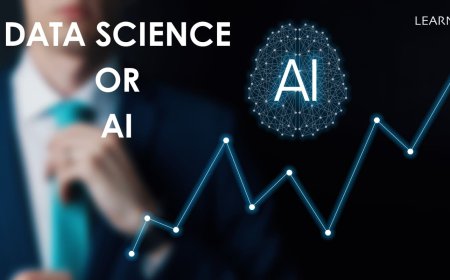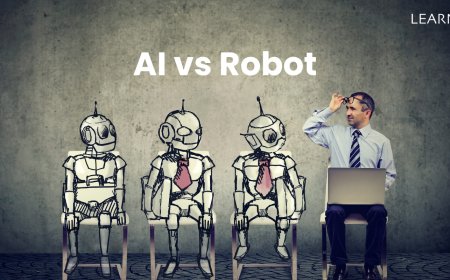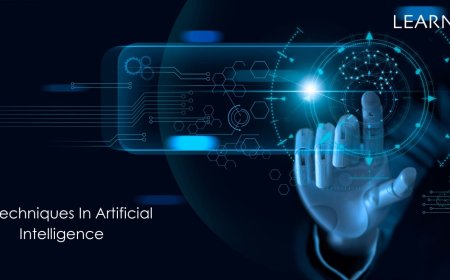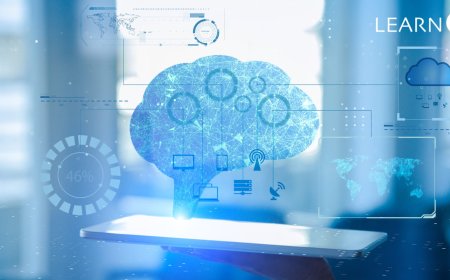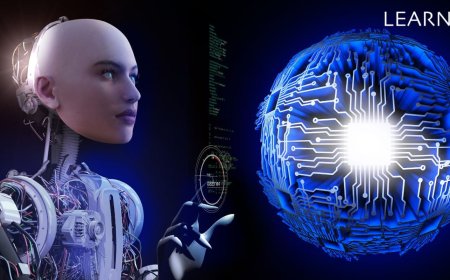Advanced AI Techniques In Artificial Intelligence
Discover the latest AI techniques like deep learning & reinforcement learning. Stay ahead with advanced AI methods & keep learning.

Artificial intelligence (AI) is getting smarter and smarter, thanks to new and improved techniques. This means researchers and tech experts are working hard to make AI even better. These advancements are important because they could change a lot of things in different areas like healthcare, finance, and more. When we talk about advanced AI techniques in artificial intelligence, we're talking about a bunch of cool ways to make AI smarter. These methods include things like machine learning, deep learning, natural language processing, computer vision, and reinforcement learning. Each of these methods has its strengths and challenges, adding to the big picture of AI research and development. Anyone interested in AI needs to keep up with these new techniques. This helps us use AI to solve more problems and come up with new ideas for how to use it. As AI gets better, it's going to change our world in big ways. So, understanding and using these advanced AI techniques in artificial intelligence is key to shaping the future of tech and society.
How AI Techniques in Artificial Intelligence Have Changed Over Time
In the world of artificial intelligence (AI), the ways we make AI work have changed a lot. At first, we used simple rules to tell AI what to do. But then, something big happened: we figured out how to make AI learn from data all by itself. This was a game-changer. With something called neural networks, AI started getting smarter. Instead of following strict rules, it could learn patterns from lots of examples. This made AI much better at things like recognizing pictures or understanding language.
Then came deep learning. This made AI even better at understanding huge amounts of messy data. It's like giving AI to understand things better than ever before. Another cool thing that happened was reinforcement learning. This is where AI learns by trying things out and seeing what works, just like how we learn. This made AI good at things like playing games or driving cars. And the future looks bright for AI! People are working on making AI even better. They're figuring out how to make it explain what it's doing, learn from different situations, and share what it's learned with other AI. So, AI is going to keep getting smarter and helping us in more ways than we can imagine.
Understanding the Complications of Advanced AI Techniques
Artificial Intelligence (AI) is getting smarter and can do more amazing things. But as it gets better, it also brings some tricky problems. Let's take a closer look:
1. Data Bias and Ethics: AI techniques in artificial intelligence need lots of data to learn from. But sometimes, the data can be biased, meaning it favors certain groups. It's important to use AI fairly and ethically.
2. Understanding How AI Decides: Some AI models are like mysteries. We don't always understand why they make the decisions they do. This makes it hard to trust them or know if they're doing the right thing.
3. Keeping AI Safe from Tricks: Bad people can try to fool AI systems by giving them fake information. This is a big problem, especially for things like self-driving cars and medical diagnoses.
4. Using Lots of Resources: AI techniques in artificial intelligence can be very demanding on computers and energy. This can be bad for the environment and make it hard for smaller groups or countries to use AI.
5. Dealing with Rules and Laws: AI is changing fast, but the rules about how to use it aren't keeping up. This creates uncertainty about who's responsible if something goes wrong, and it can also threaten people's privacy.
Understanding and dealing with these problems is really important for making sure AI helps us without causing more problems.
What are the basic AI techniques and how do they work?
When it comes to AI techniques in artificial intelligence, there are a few key ones to know about. One important one is Machine Learning (ML). This is where computers learn from data to make decisions without someone telling them exactly what to do. ML can be broken down into a few types:
1. Supervised learning: This is when the computer learns from labeled data, meaning the data is already marked with the correct answers.
2. Unsupervised learning: Here, the computer figures out patterns from data that isn't labeled.
3. Reinforcement learning: This is like trial and error for computers, where they learn from the results of their actions.
Another big one is Natural Language Processing (NLP). This helps computers understand and work with human language. NLP lets computers read text, figure out what it means, and even talk back in a way that makes sense. Then there's Computer Vision (CV). This is how computers see and understand images and videos. They can pick out objects, recognize faces, and do things like sorting pictures or tracking objects in video clips. All these AI techniques in artificial intelligence work by looking at lots of data, finding patterns in it, and getting better at their jobs over time.
Different Ways AI Works in Artificial Intelligence
Artificial intelligence (AI), there are lots of different ways that computers learn and understand things. These are called AI techniques in artificial intelligence. Let's look at some of them and see why they're important for the future.
1. Teaching Computers with Data: One way computers learn is through something called machine learning. They use data to get better at tasks without being told exactly what to do. This helps them spot patterns and make predictions.
2. Going Deeper with Neural Networks: Deep learning is a type of machine learning that uses networks of neurons, kind of like our brains, to learn about data in layers. This has made big advancements in recognizing images, understanding speech, and processing language.
3. Understanding Human Language: Natural language processing (NLP) helps computers understand and work with human languages. It's how they can figure out what we're saying, analyze how we're feeling, or even translate languages.
4. Seeing the World Like Us: Computers can learn to see and understand pictures and videos through computer vision. They use techniques like spotting objects, dividing images, and recognizing faces. This is used in things like self-driving cars, medical imaging, and security systems.
5. Learning from Mistakes: Reinforcement learning is like how we learn from trying things out and getting feedback. Computers use it to learn to make decisions, like in playing games or controlling robots.
6. Creating New Things: Generative adversarial networks (GANs) are a way for computers to create new things, like images or music, by learning from existing examples.
7. Sharing What We Know: Transfer learning helps computers use what they've learned in one situation to help with something similar but different. This speeds up learning and makes AI more efficient.
8. Taking Cues from Nature: Evolutionary algorithms are inspired by how living things evolve. Computers use them to solve tricky problems by trying out different solutions and seeing what works best.
9. Making Decisions with Uncertainty: Bayesian inference helps computers make decisions when they're not sure about something. It's like updating your beliefs based on new information.
10. Using Logic: Symbolic AI is a way of representing knowledge and using logic to solve problems. While it's not as popular as other methods lately, it's still useful for tasks where clear thinking and logic are important.
The progress we've made in AI techniques in artificial intelligence has changed how we think about AI. It's opened up amazing possibilities and chances we never had before. Thanks to things like deep learning and reinforcement learning, computers can now do stuff that used to be only for humans, like understanding language and seeing things. But as we keep pushing AI further, we have to remember the ethics. We need to make sure we're using these powerful technologies in the right way. By being responsible with AI while still using its full power, we can make it work for everyone. It can help us solve big problems and make life better for everyone. By using these AI techniques in artificial intelligence wisely and thinking about what's right, we can do some amazing things. We can help out society, come up with new ideas, and solve tough problems in lots of different areas.
